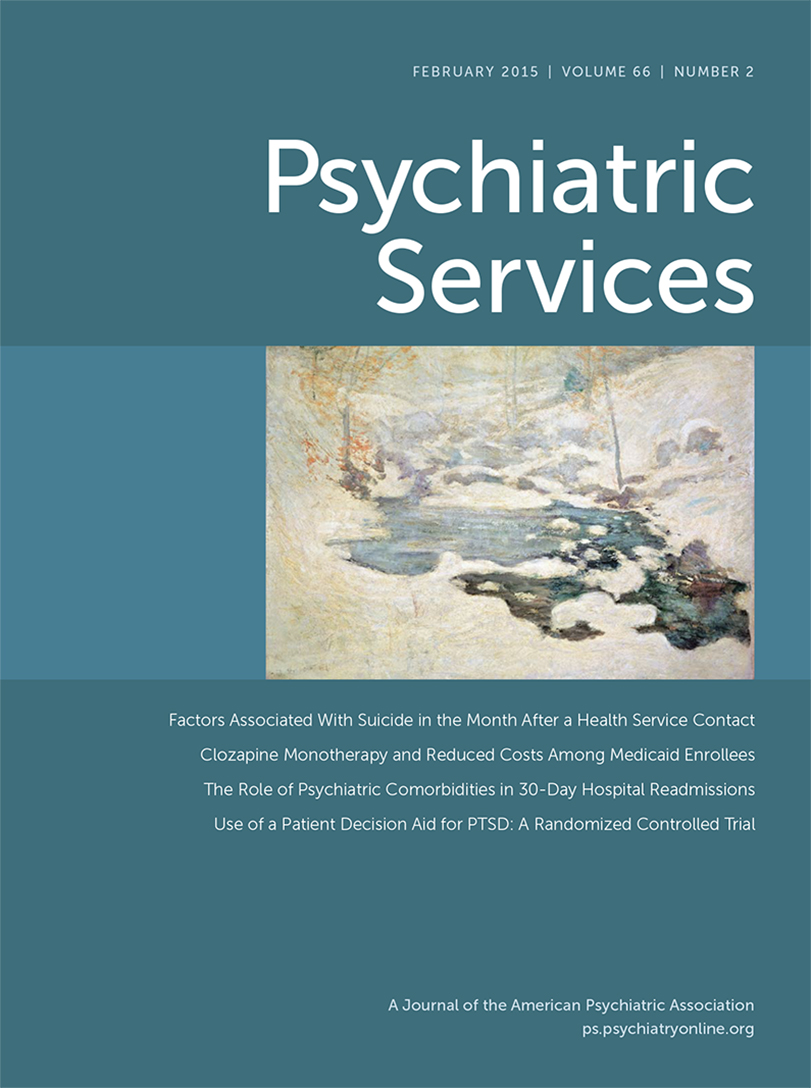Outcomes of Medicaid Beneficiaries With Schizophrenia Receiving Clozapine Only or Antipsychotic Combinations
Abstract
Objective:
Patients with treatment-resistant schizophrenia commonly receive nonrecommended drug regimens, including antipsychotic polypharmacy, sometimes in lieu of clozapine. This analysis compared utilization and cost outcomes for cohorts of Medicaid beneficiaries treated with clozapine monotherapy and with antipsychotic polypharmacy.
Methods:
Data were from the Medicaid MarketScan database. Patients (age 18–64) initiated second-generation antipsychotic polypharmacy or clozapine monotherapy between July 2006 and January 2009, had continuous Medicaid coverage from six months before (preperiod) through 12 months after (postperiod) treatment initiation, and had a diagnosis of schizophrenic disorder (ICD-9-CM code 295.XX). Study outcomes included disease-specific and all-cause hospitalization, emergency department use, and Medicaid payments. Logistic regression analyses and generalized linear models controlled for demographic factors, preperiod utilization, and comorbidities.
Results:
Characteristics associated with use of clozapine monotherapy (N=479) instead of antipsychotic polypharmacy (N=2,440) included younger age, fewer comorbidities, lower preperiod utilization rates, nonwhite race, and male sex. When the analysis controlled for baseline differences, clozapine monotherapy was associated with lower odds of mental disorder–related (odds ratio [OR]=.75, 95% confidence interval [CI]=.60–.95) or schizophrenia-related (OR=.70, CI=.54–.90) emergency department use but not with hospitalization or all-cause emergency department use. Total Medicaid payments were significantly lower for the clozapine group than for the polypharmacy group: reductions of $21,315 for all-cause, $17,457 for mental disorder–related, and $10,582 for schizophrenia-related payments.
Conclusions:
Among nonelderly adult Medicaid beneficiaries with schizophrenia, treatment with clozapine instead of antipsychotic polypharmacy was associated with reduced disease-specific emergency department use and with reduced disease-specific and all-cause health care costs.



